Broiling Salmon Is Quick, Easy & Efficient
Broiling salmon is one of the quickest and most flavorful ways to cook this popular fish. In just minutes, you can achieve a beautifully caramelized crust on the outside while keeping the inside tender and flaky.
This method uses high, direct heat from above, making it ideal for weeknight dinners when you need something fast, healthy, and satisfying. The broiler mimics the effect of grilling, but with more control and no need to fire up an outdoor grill.
You may be asking yourself, did he say “broil” salmon? Who broils anything anymore? In this post, I’ll explain everything you need to know about broiling salmon—from choosing the right cut to seasoning ideas and broiling times based on thickness.
Whether you’re cooking fillets with the skin on or off or using wild-caught or farm-raised salmon, this technique delivers bold flavor and crisp edges without drying out the fish. It’s perfect for pairing with fresh salads, roasted vegetables, or a quick pan sauce.
If you’ve never used your broiler before or aren’t sure how to tell when your salmon is done, don’t worry—I’ve included clear tips and timing cues to help you broil salmon to perfection every time. Let’s get started with this easy, delicious cooking method that’s sure to become a favorite.
How to Broil Salmon
Ingredients
- 4 fillets salmon 6 to 8 ounces each
- 3 tablespoons olive oil extra virgin
- salt & pepper to taste
- 1 lemon quartered
- 4 sprigs dill for garnishing
Instructions
- Place the top rack of your oven high enough so when you place a heat proof skillet like a cast iron pan with the salmon fillets on it there will be 2-inch distance from the heat for every ½ inch thickness of salmon.So if your fillets are 1-inch thick, you’ll want them 4 inches from the heat. This prevents thicker cuts from overcooking on the outside before the center is completely cooked.
- Drizzle some of the oil on the pan and spread it around with the salmon fillets, skin side down. This will spread the oil around on the pan as well as coat the bottom of the fish. Use the remaining oil to coat the top of the fillets.
- Season with salt and pepper and place the pan on the top rack of the oven right under the broiler and broil for about 6 to 8 minutes per inch of thickness.One factor that will change the cooking time is when you take the salmon out of the refrigerator. If it comes right out of the fridge and into the pan, it could take a little longer so I recommend you try to take it out 10 - 15 minutes before you start cooking.
- Carefully remove the pan from the oven using an oven mitt*. The pan is HOT and I have made the mistake of grabbing a hot pan out of the oven without a mitt and it hurts, really hurts. So be careful.
- Check for doneness by looking at the color and checking for flakiness. It's not the same flakiness you find with white fish like fluke or flounder but as you can see in the photo above, there is a separation in the meat.
- Transfer the fillets to serving plates and sprinkle a little lemon & extra virgin olive oil on top of each fillet.
- Normally I would say let them rest for a couple of minutes before plating but I’m guessing it will take a minute or two to get them from the oven to the plate to the table.
How to Broil Salmon in 9 Easy Steps
Preheat the Broiler
Set your oven’s broiler to high heat.Prep the Baking Sheet
Line a baking sheet with foil and lightly grease it with cooking spray or oil.Rinse and Dry the Salmon
Rinse salmon fillets under cold water and pat dry with paper towels.Arrange on Sheet
Place fillets skin-side down on the prepared baking sheet.Add Oil or Butter
Brush each fillet with oil or melted butter to prevent sticking and boost flavor.Season Well
Sprinkle with salt, pepper, and your favorite seasonings—try garlic, herbs, or a spice blend.Optional: Add Marinade or Sauce
Enhance flavor with a quick marinade like honey mustard, soy-ginger, or lemon-herb.Broil
Place the salmon under the broiler for 5–7 minutes, depending on thickness. Watch closely to prevent burning.Rest and Serve
Remove from oven and let rest a few minutes before serving.
Result: Crispy on the outside, moist and tender on the inside—perfect every time.
Additional Ingredients For Broiled Salmon
Recipe Name | Key Ingredients | When to Add | Notes |
| Broiled Salmon with Herb Mustard Glaze | Garlic, rosemary, thyme, Dijon mustard, oil | Last 2–3 minutes of broiling | Spoon glaze over fillets during final broil minutes |
| Garlicky Broiled Salmon | Olive oil, garlic slices, thyme | Before broiling | Drizzle over salmon before placing under broiler |
| Honey and Soy Broiled Salmon | Soy sauce, honey, rice wine vinegar, lemon juice, minced garlic | Before broiling | A sweet and savory option with bright acidity |
| Broiled Salmon with Tarragon Butter | Butter, lemon juice, fresh tarragon | Last 2–3 minutes of broiling | Spoon over for an elegant finish |
| Broiled Salmon with Truffle Oil | Truffle oil (substitute for olive oil) | Before broiling | Adds rich, earthy depth to the dish |
| Broiled Salmon with Blue Cheese, Lemon, and Dill | Blue cheese, dill, shallots, white wine, lemon juice | Last 2–3 minutes of broiling | Add carefully to avoid burning the cheese |
Pros and Cons
Pros
Quick Cooking Time
Broiling takes just a few minutes, making it ideal for busy weeknights.Crispy Exterior, Moist Interior
The high heat creates a beautifully crisp crust while keeping the inside tender and juicy.Easy Cleanup
Just line a baking sheet with foil—less mess, less stress.Highly Versatile
Broiled salmon works well with a wide variety of seasonings and side dishes.
Cons
Risk of Overcooking
Salmon cooks fast under a broiler—watch it closely to avoid drying it out.Uneven Cooking
Thinner portions can overcook before thicker parts are done. Choose fillets of even thickness when possible.Lack of Temperature Control
Broilers operate at very high heat, and it’s hard to adjust. Keep a close eye to prevent burning.
How Long Does It Take?
Broiling salmon is a quick cooking method that takes only a few minutes to cook the fish. As with all cooking methods, the cooking time will depend on the thickness of the salmon fillet or steak. As a general guideline, salmon fillets that are about 1 inch thick should be broiled for 7-10 minutes, while thicker fillets or steaks may take up to 12-15 minutes to cook.
It’s important to keep a close eye on the salmon while it’s cooking to ensure that it doesn’t overcook and become dry. A good way to test for doneness is to use a fork to gently pull apart the flesh in the thickest part of the fillet. If the flesh flakes easily and is opaque, it’s done. If it’s still slightly translucent in the center, it may need a few more minutes under the broiler.
What Temperature?
Most home oven broilers typically have a temperature range of 500°F to 550°F (260°C to 290°C). However, the exact temperature may vary depending on the make and model of the oven. It’s important to preheat the broiler for several minutes to ensure it’s hot enough to cook the salmon properly. When broiling salmon, it’s important to position the oven rack close to the broiler element to allow for quick and even cooking.
Can You Control the Temperature in a Home Oven?
In most home ovens, it is impossible to control the broiler element’s temperature separately from the oven temperature. The broiler element is designed to provide intense heat from the top of the oven to cook food quickly and create a crispy, browned exterior.
However, some high-end ovens may have broiler settings that allow you to adjust the intensity of the broiler element, which can affect the temperature. It’s always a good idea to refer to the owner’s manual for your specific oven to learn about its features and settings.
If you want more control over the temperature when cooking salmon, consider other cooking methods like baking or grilling, which allow for more precise temperature control.
How Close to the Flame or Heating Element Should You Place the Salmon?
When broiling salmon in the oven, the distance between the fish and the flame (or broiler element) is important to get the desired result. A general rule of thumb is to place the salmon about 6 inches away from the heat source. However, this can vary depending on your broiler’s strength and the salmon’s thickness.
If the salmon is too close to the heat source, it can burn and become dry. On the other hand, if the salmon is too far away from the heat source, it may not cook evenly and may take longer to cook.
To ensure even cooking and avoid burning, it’s a good idea to keep an eye on the salmon while it’s broiling and to adjust the distance as needed. If you find that the salmon is cooking too quickly or browning too much on one side, you can move the pan further away from the heat source or turn the fish over halfway through cooking.
Do You Flip the Salmon or Cook On One Side Only?
When broiling salmon, it’s generally a good idea to flip it over halfway through cooking to ensure even browning and cooking. This also helps to prevent the salmon from sticking to the pan and breaking apart.
However, some recipes may call for only broiling the salmon on one side, especially if it’s a fillet or a smaller piece of fish. In this case, the skin side is usually placed down on the broiling pan.
Ultimately, whether or not you flip the salmon during broiling depends on the recipe and personal preference. Just remember that flipping the salmon can help ensure even cooking and prevent burning, especially if you’re broiling a thicker piece of fish.
If you start skin side down and flip it, will it crisp the skin?
Yes, flipping the salmon over and finishing it with the skin side up can help to crisp up the skin. This is because broiling salmon with the skin side up exposes the skin directly to the broiler’s heat, which can help to achieve a crispy and slightly charred texture.
More Tips for Crispy Skin
- Make sure the salmon skin is dry: Pat the skin of the salmon dry with a paper towel before cooking. This helps remove any excess moisture, preventing the skin from getting crispy.
- Brush the skin with oil: Brushing the skin with oil before broiling can help to create a crispy texture. Use a high smoke point oil like avocado or grapeseed oil, and lightly coat the skin with a thin layer.
- Season the skin: Season the skin with salt and pepper or other desired seasonings before broiling. This adds flavor and helps to enhance the crispy texture.
- Preheat the broiler: Allow the broiler to preheat for several minutes before cooking the salmon. This ensures that the broiler is hot enough to create a crispy texture.
- Place the salmon skin-side up: Place the salmon skin-side up on a broiler pan or a wire rack set over a baking sheet. This allows the skin to crisp up and prevents it from getting soggy.
- Monitor the salmon closely: Salmon can cook quickly under the broiler, so it’s important to keep a close eye on it to prevent overcooking or burning. Check the salmon after a few minutes and adjust the broiler temperature or the distance between the salmon and the broiler if necessary.
However, it’s important to ensure the salmon is cooked before serving, so it’s recommended to use a meat thermometer to ensure the internal temperature reaches at least 145°F (63°C).
What Type of Pan to Broil In?
The recipe and video show preparing the salmon in a cast iron pan, which is a fantastic cookware for broiling, but any ovenproof pan will do. We like to use a baking pan covered with aluminum foil in our house. It makes cleanup a lot easier.
Please be careful when you remove the pan from the oven. It’s going to be hot, so use an oven mitt.
As I said earlier, this is the most basic of recipes, but don’t let that stop you from coming up with ideas using some of your favorite fresh local ingredients. Below is the recipe. I’ve listed some alternative ideas for adapting this simple broiled salmon recipe that should give you some ideas.
And please visit my Pinterest page for more Cooking Techniques.
Great Sides Ideas for Broiled Salmon
There are many great side dishes that can be served with broiled salmon. Here are a few ideas:
Side Dish | Description | Preparation Tips |
| Roasted Vegetables | Pairs well with broiled salmon—options include asparagus, broccoli, Brussels sprouts, or carrots. | Toss with olive oil, salt, and pepper. Roast at 400°F until tender and caramelized. |
| Grilled Vegetables | Complements salmon’s rich flavor—use zucchini, eggplant, peppers, or onions. | Grill with a pan or outdoor grill. Drizzle with balsamic vinegar or lemon juice. |
| Rice or Quinoa | A simple grain base that soaks up juices and balances the dish. | Flavor with herbs, lemon juice, or coconut milk. |
| Salad | A fresh, crisp contrast to salmon’s richness. | Use greens, cherry tomatoes, cucumber, and vinaigrette. |
| Sweet Potatoes | Adds natural sweetness and nutrients—can be roasted or mashed. | Roast or mash; season lightly to highlight the salmon. |
| Fruit Salad | Bright and refreshing; adds a sweet, acidic contrast. | Use seasonal fruits like berries, mango, or kiwi with honey-lime dressing. |
| Sautéed Spinach | A warm, earthy green that complements salmon’s flavor. | Sauté with garlic and olive oil until wilted. Season with salt and pepper. |

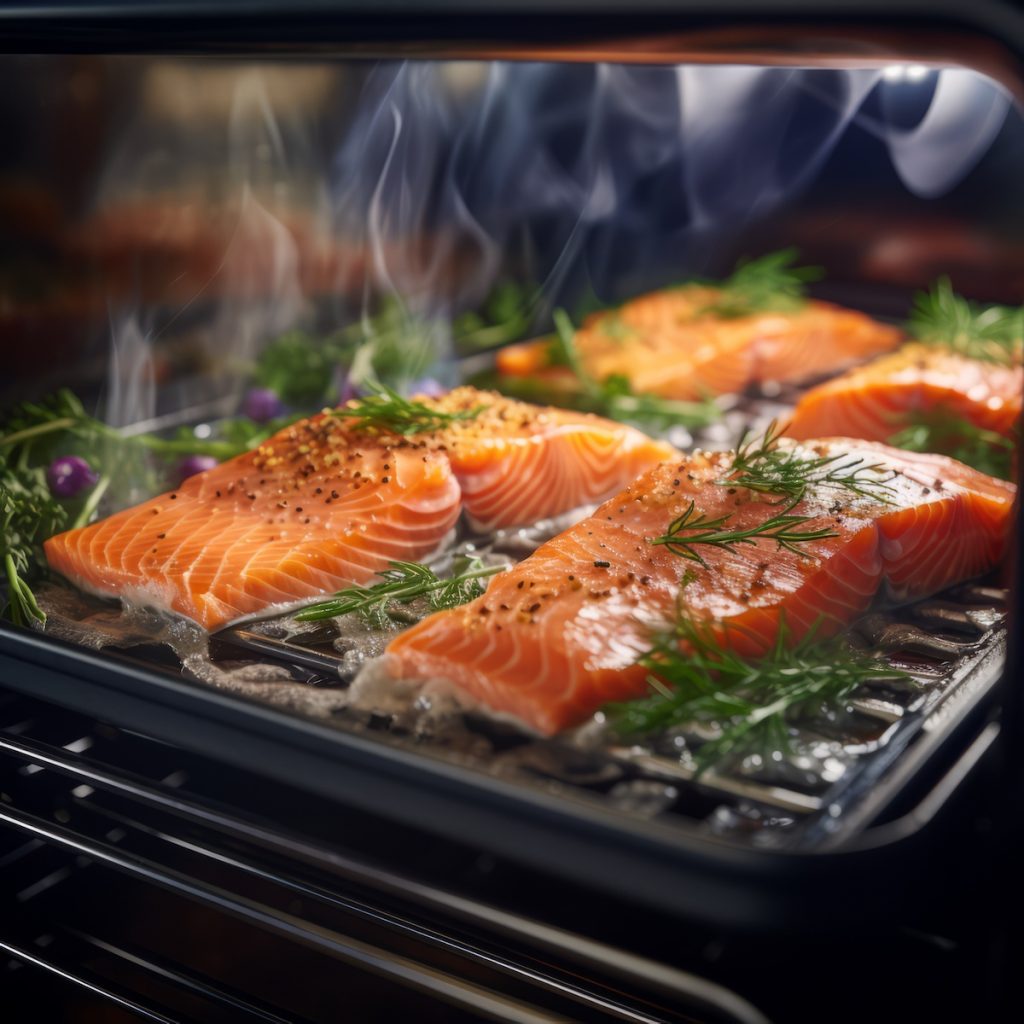
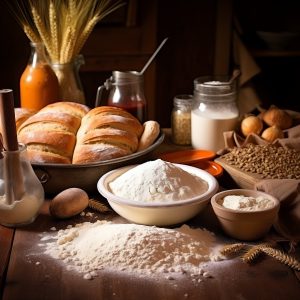
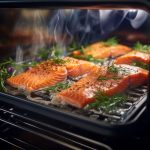
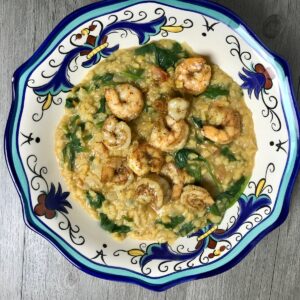
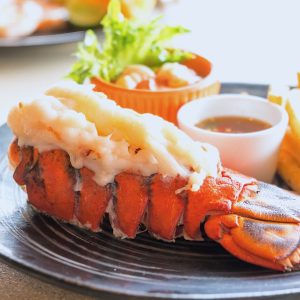
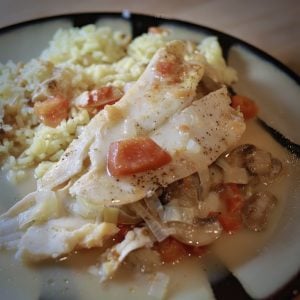
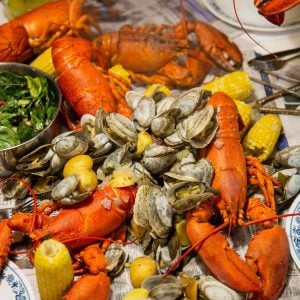
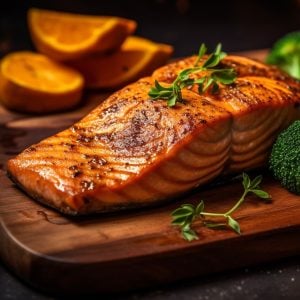
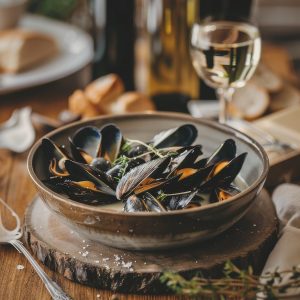
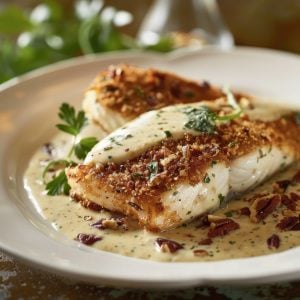
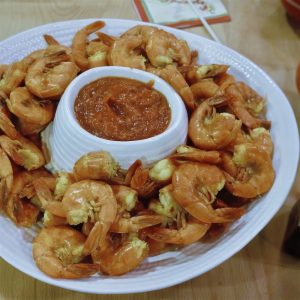


12 Responses
Good salmon can be prepared so many ways so it is not like you are serving the same thing all the time. And it is so good and good for you. Try to stick to wild caught, as in general it is sustainable I think.
Thanks for your comments Cynthia.
Looks so yummy. I was wondering if it’s okay to do this in a toaster oven? If so, do I have to make changes in the recipe? Thanks.
Thanks Kasey. If your toaster oven has a broiler element, I guess you could but I never have tried it. Please let me know if you try it and tell me about your results.
Hey! Well you most certainly can cook fish in a toaster oven as it does have a broiling option! Never tried it before truthfully but it can be done, not exactly sure how it will turn out but it most certainly can be done. Im sure there’s certain recipe links for toaster oven cooking specifically!!!!
I tried broiling salmon on a foil-lined non-stick cookie sheet. It was very close to the coil, which was on high. Well, first the sheet warped with one corner sticking up. Then the foil caught fire. Still, the salmon, which had been frozen, wasn’t over 100 degrees. So I gave up on it, decided it might be dangerous to eat with all the warping and burning. Next time, I’ll use a glass pan and no foil. Or find a way to bake it, if that’s possible.
Wow.
I can only guess that maybe your broiler pan/grill rack was much too close to the actual heating element. I too have caught aluminum foil alight (not oven related), however, I’ve never heard of it happening under a broiler.
Thank you for your detailed description, worked wonderfully. It will be fun to experiment with the flavour variations. I used a stainless steel pan and didn’t stick at all. The salmon was thawed from frozen, but it stayed nice and moist.
Good to hear Eszter. Thank you so much for letting me know about your experience.
I have a gas oven. As long as I have a six inch clearance I should fine right?
I have read on another website that the distance is related to the thickness of the fish. They say, “The distance from the heat source is determined by the thickness of the fish, allow 2-inches distance from the heat for each 1/2-inch of thickness.”
I’d suggest skipping the aluminum foil. Eating all that aluminum probably isn’t so healthy.